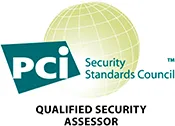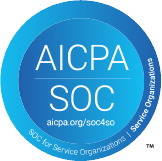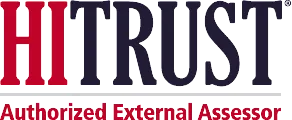With the rise in cyberattacks continuing year over year, now is the time to assess the effectiveness of your organization’s cybersecurity risk management program. With thousands of SOC reports issued, BARR not only serves as your auditor—we’re your trusted security partner, and our experts will work to increase transparency and confidence for your stakeholders.

SOC for Cybersecurity Compliance
A Comprehensive Risk Management Examination
Cybersecurity Risk Management You Can Trust
With high-profile attacks on the rise, the American Institute of Certified Public Accountants (AICPA) issued the SOC for Cybersecurity Reporting Framework. Using it, organizations can communicate pertinent information regarding their cybersecurity risk management efforts and educate stakeholders about the systems, processes, and controls they have in place to detect, prevent, and respond to breaches and other cyber threats.
A cybersecurity risk management framework helps organizations define their cybersecurity control objectives and create and adhere to a risk management plan that meets those objectives. Cybersecurity risk management frameworks integrate management and compliance efforts in order to standardize security and data protection strategy.
The AICPA determined that three separate types of reports were needed to address the information security reporting needs of organizations.
- Entity — Provides transparency to key elements of the entity’s cybersecurity risk management program.
- Service provider — In addition to entity-level benefits, provides sufficient, detailed information to address the user vendor risk management needs.
- Supply chain — In addition to entity-level benefits, provides sufficient, detailed information to address the user’s supply chain risk management tools.
- Management’s description — The description of the entity’s cybersecurity risk management program.
This description is designed to provide information about how the entity identifies its information assets, the ways in which the entity manages the cybersecurity risks that threaten it, and the key security policies and processes implemented and operated to protect the entity’s information assets against those risks. - Management’s assertion — Management provides the assertion regarding the presentation and effectiveness of the controls in place to achieve the cybersecurity criteria. The assertion addresses description criteria and control criteria.
- Practitioner’s opinion — A CPA’s opinion on the description of the entity’s cybersecurity risk-management program and the effectiveness of controls within that program to achieve the entity’s cybersecurity objectives.
A SOC for Cybersecurity examination may be performed for any organization, regardless of size or industry. This may include lenders, investors, analysts, insurance providers, and regulators. If you’re looking to minimize your organization’s risk, SOC for Cybersecurity may be right for you.
Most cybersecurity experts agree that regardless of an organization’s size, a breach is not a matter of if, but when. Be proactive in ensuring your security controls and protecting your business interests with a SOC for Cybersecurity report. Benefits include:
- Increased transparency and assurance about cybersecurity program effectiveness
- Elevated stakeholder confidence in an organization’s preparedness
- Ability to promote internal operational efficiency
There are some key differences between SOC 2 reports and SOC for Cybersecurity reports with regard to scope, purpose and use, and controls. While a SOC 2 examination reports on the AICPA’s trust services criteria (security, availability, processing integrity, confidentiality, and privacy) for a broad range of users, a SOC for Cybersecurity report is more specific in providing organizations with objective assurance that the appropriate systems, processes, and controls exist to manage a cyberattack. Objectives for a SOC for Cybersecurity report may include availability, confidentiality, integrity of data, and processing. Depending on your organization’s needs, a SOC for Cybersecurity report may be a valuable option even if your organization already has a SOC 2 Report.
Types of SOC for Cybersecurity Reports
Type 1 Report
The SOC for Cybersecurity Type 1 Report (referred to as a point-in-time report), includes a description of a service organization’s system as well as verifies whether internal controls described by a service organization are suitably designed to meet specified control objectives. The Type 1 report reflects your organization’s controls as of a specific date in time and is typically utilized for first-time issuers as pre-cursor to a Type 2 report.
Type 2 Report
The SOC for Cybersecurity Type 2 Report (referred to as a specific point in time report) provides the same information as the Type 1 report, but also includes a management assertion and an auditor’s opinion on the operating effectiveness of your controls. This type of report reflects your organization’s controls over the course of a specific review period.
Contact Us for a Free Consultation
Speak with a BARR specialist about your security and compliance needs.
Why BARR for SOC Reporting
We’re here to help you! Contact us to speak with a BARR specialist. We offer a full range of SOC compliance consulting and reporting services, including SOC 1, SOC 2, SOC 3, and SOC for Cybersecurity.
Client Testimonials
Recent Blog Posts
Frequently Asked Questions
SOC 2 and SOC for Cybersecurity reports differ in scope, purpose, and focus. SOC 2 evaluates adherence to the AICPA’s trust services criteria—security, availability, processing integrity, confidentiality, and privacy—to serve a broad audience. SOC for Cybersecurity provides targeted assurance that systems and controls effectively manage cyberattacks, focusing on availability, confidentiality, and data integrity. Any organization can obtain a SOC for Cybersecurity report. If your organization already has a SOC 2 report, a SOC for Cybersecurity report may still be valuable based on your specific cybersecurity goals. Read our article for more information.
SOC for Cybersecurity reports are not required by law for any organization—they are voluntary evaluations designed to provide assurance about an organization’s cybersecurity risk management processes and controls. However, a SOC for Cybersecurity report can be valuable for demonstrating a strong cybersecurity posture to stakeholders, and may be requested or required by clients and partners.
A SOC for Cybersecurity audit can take several weeks or months depending on the type of audit, scope, and complexity of the organization’s environment. During your engagement, BARR’s auditors will review all applicable controls, policies, and procedures to ensure they address identified risks effectively. The result is a detailed report that offers stakeholders insights into the organization’s ability to prevent, detect, and respond to cyber threats.
Contact Us for a Free Consultation
We’re here to help you! Speak with a BARR specialist about your security and compliance needs.






